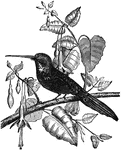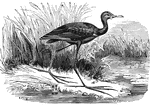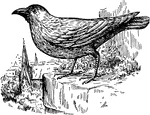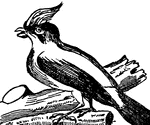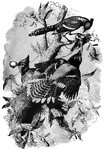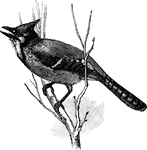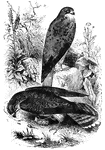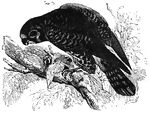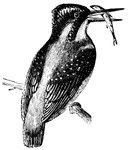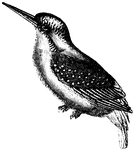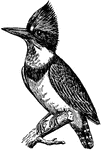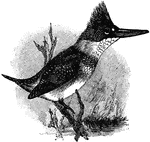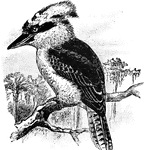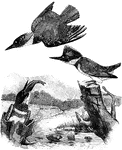128 illustrations of birds including: jacamar, jacana, jackdaw, jarbiru, jay, kestrel, king bird, kingfisher, kinglet, kite, kiwi, kohlmeise, kookaburra, lammergeier, land-rail, lapwing, lark, linnet, loon, lory, love bird, and lyre bird

Head of a Great Jacamar
The head of a Great Jacamar, a bird belonging to the Scansores order. Scansores is an order of birds,…
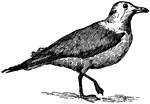
Kittiwake Gull
The Kittiwake gull (Rissa tridactyla) is a sea-gull characterized by the absence of the hind toe. It…

Jacamar
Their habits are little known; but it is certain that they live isolated or in pairs, that they are…
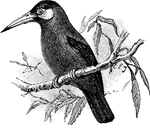
White-Eared Jacamar
The White-Eared Jacamar (Galbalcyrhynchus leucotis) is a bird in the Galbulidae family of jacamars.

Jacana
These birds have long toes and claws that permit them to walk easily across leaves of tropical aquatic…
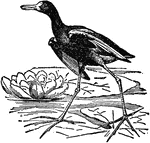
Jacana
"The Jacana is a wading bird; a genus of grallatores. They are very light birds; and the wide surface…

Indian Jacana
"Hydrophasianus chirurgus, the Indian Jacana, of most of the Indian Region, is Bronzy-brown above and…
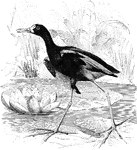
Parra Jacana
"Parra. Jacanas. Bill plover-like, contracted in continuity, enlarged terminally; with culmen depressed…
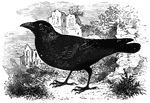
Jackdaw
The jackdaw is a nonmigratory bird, distributed throughout Middle Europe and Asia, as well as Great…
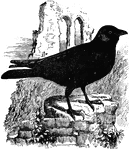
jackdaw
"Corvus monedul. Jackdaw. The species throughout uniform lustrous black, including the bill and feet;…
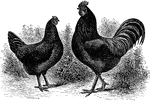
Pair of Black Javas
Originated in the United States. It is one of the oldest American chickens, and is critically endangered…
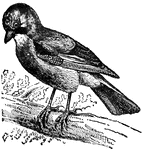
Jay
"Jay is the popular name of a species of birds belonging to the crow family, of a vinous red color;…
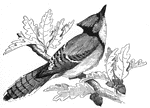
Blue Jay
Blue jays are abundant in the central and eastern states. They are characterized by blue-gray feathers…
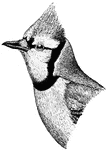
Blue Jay
The Blue Jay (Cyanocitta cristata) is a passerine bird, and a member of the family Corvidae native to…
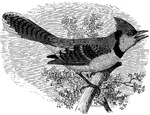
Blue Jay
"Cyanocitta cristata. Blue Jay. Male: Purplish-blue, below pale purplish-gray, whitening on throat,…

Canada Jay
"Perisoreus canadensis. Canada Jay. Whiskey Jack. Moose-bird. Gray whitening on head, neck, and breast;…
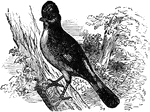
Eurasian Jay
"European Jay. Garrulus glandarius. With the wings much shorter than or about equalling the tail, both…

European Jay
The European Jay is brownish red tinged with grey. It has a patch of ultramarine blue banded with black…
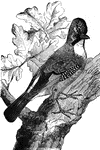
European Jay
The European jay is common through Europe, feeding on vegetables and fruits, as well as on insects and…

Long-crested Jay
"Cyanocitta stelleri macrolopha. Long-crested Jay. Upper parts sooty umber-brown, with a faint blue…
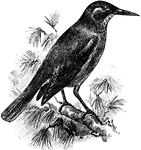
Pinyon Jay
The Pinyon Jay (Gymnorhinus cyanocephalus) is a bird in the Corvidae family of oscine passerine birds.…

The Common Blue Jay
Also known as Cyanocitta cristata. These birds have a loud, harsh voice and striking colors. They occasionally…
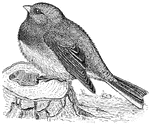
Junco
The Juncos, genus Junco, are small American sparrows. Their systematics are still very confusing after…
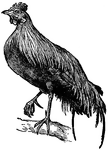
Jungle-fowl
Jungle-fowl is a general name given to the members of the genus Gallus. The red jungle-fowl, G. jerrugineus,…

Red Junglefowl
The Red Junglefowl (Gallus gallus) is a bird in the Phasianidae family of pheasants. It was also known…

Kagu
"Rhinochetus jubatus, the Kuga ... has powder-down patches that are profusely distributed over the whole…
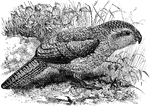
Kakapo
"Stringops habroptilus, the Kakapo or Tarapo of New Zealand has sap-green upper parts, with yellow middles…
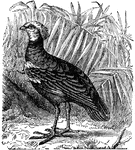
Faithful Kamichi, or Crested Screamer
The Screamers are inhabitants of South America. They live isolated, in pairs, and are mild and peaceful…

A Kea Sitting a Tree Branch
"Nestor notabilis, the Kea of the south island of New Zealand, has olive-green plumage with blackish…

Common Kestral
Falco tinnunculus. Common Kestral. This bird is a European bird of prey. Plumage on upperside, chestnut-brown…
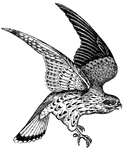
Kestrel
With sharp claws, penetrating vision, and enormous strength, it is easy to understand that these birds…
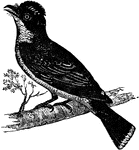
King-bird
Tyrannus carolinensis. King-bird. Bee-martin. No olive nor decided yellow. Only outer primaries obviously…
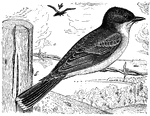
Kingbird
The genus Tyrannus is a group of large insect-eating birds in the Tyrant flycatcher family Tyrannidae.…

Kingfisher
A family of incessorial birds noted for their bright plumage, stout bill, strong feet, and short tail.
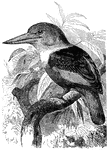
Kingfisher
"They sometimes take a position near some steam and remain for hours immovable. When a fish comes within…
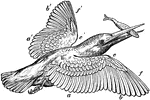
Kingfisher
"Shows the upward inclination of the body and the flexed condition of the wings in the flight of the…

Belted Kingfisher
"Many species of the kingfisher family are found in various parts of the world. The belted kingfisher…
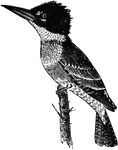
Belted Kingfisher
"Ceryle alcyon. Belted Kingfisher. Upper parts, broad pectoral bar, and sides under the wings, dull…
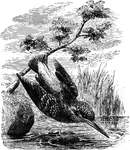
Common Kingfisher
Alcedo Ispida. European Kingfisher. Small bird, upper parts blue-green; under parts orange; rump and…
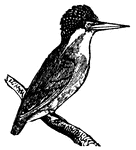
Crested Kingfisher
Kingfishers are typically stocky, with short tails and bodies. The bill is large and strong and their…
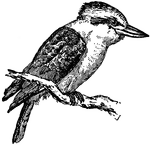
Kingfisher, Dacelo gigas
The Settler's Clock ('Dacelo gigs'), is a very large kingfisher found in Australia, where it receives…
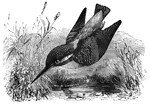
European Kingfisher
Found throughout Middle Europe, the European Kingfisher is a solitary bird that inhabits wet areas,…

Racquet-Tailed Kingfisher
"Tanysiptera, the Racquet-tailed Kingfisher or "Paradise Kingfisher", the sexes may be similar or dissimilar,…
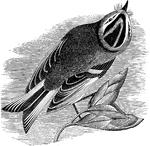
Golden Crested Kinglet
"Upper parts olive-green, more or less bright, sometimes rather olive-ashy, always brightest on the…

